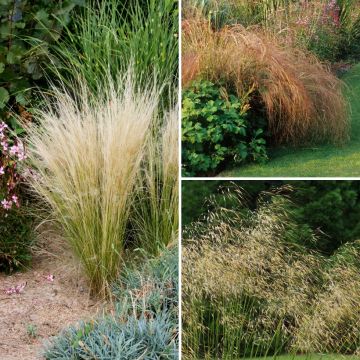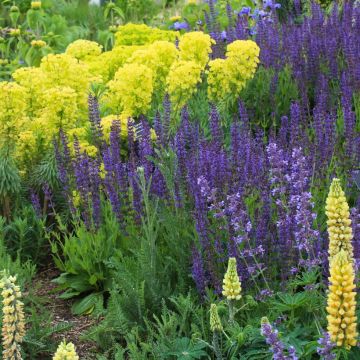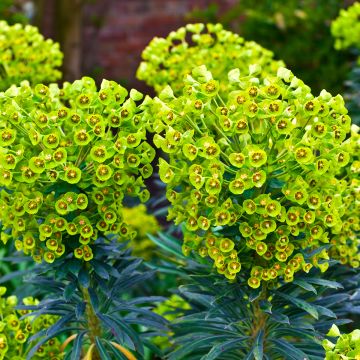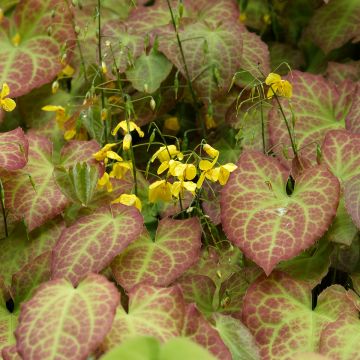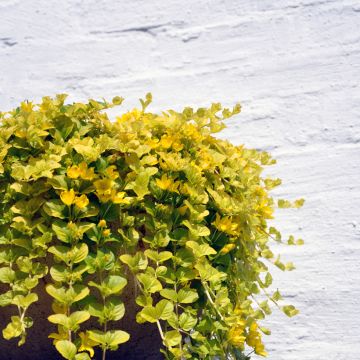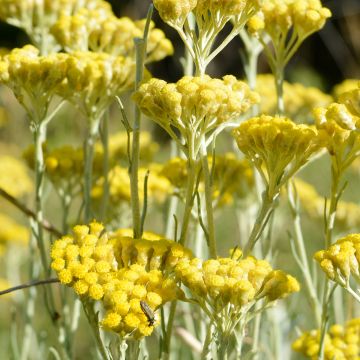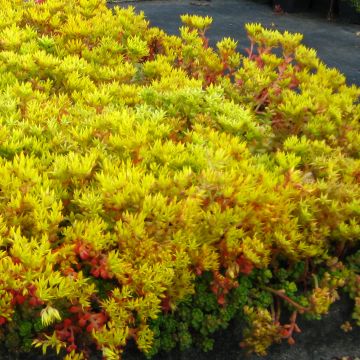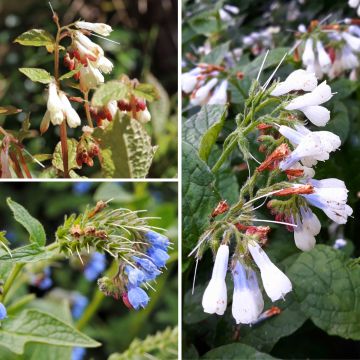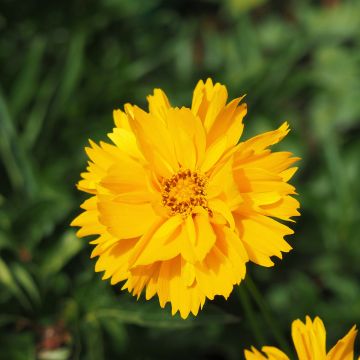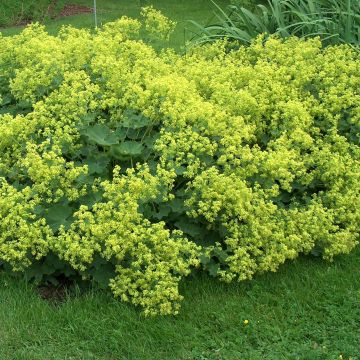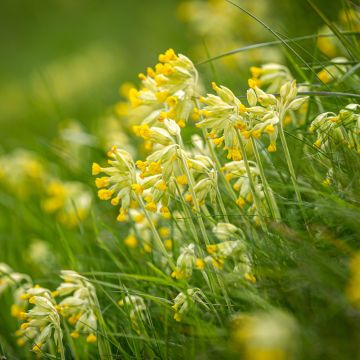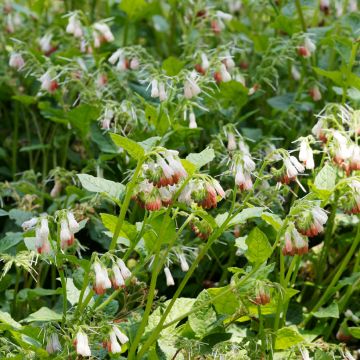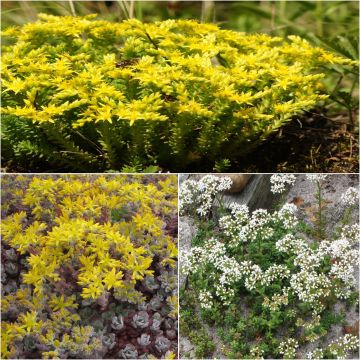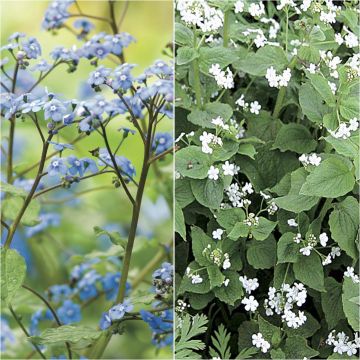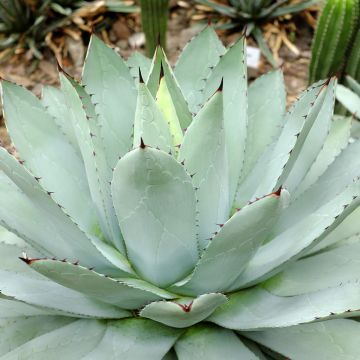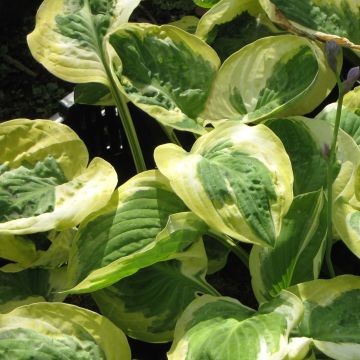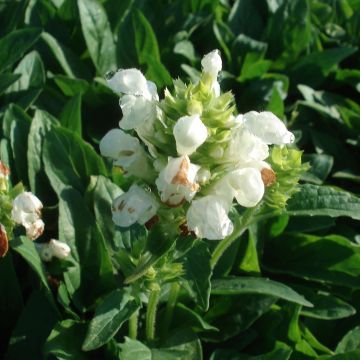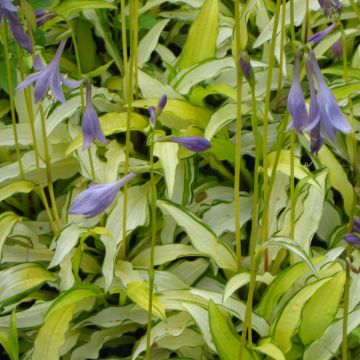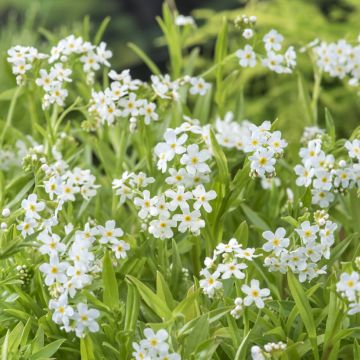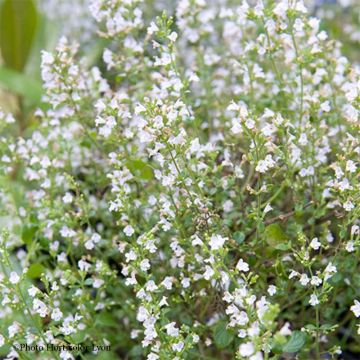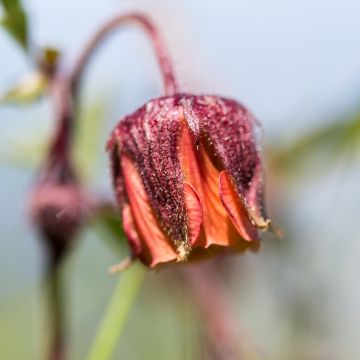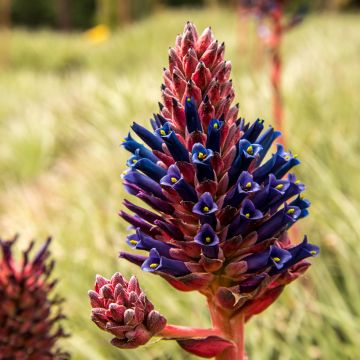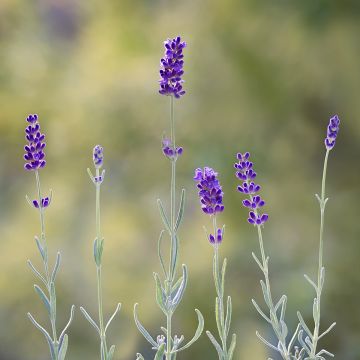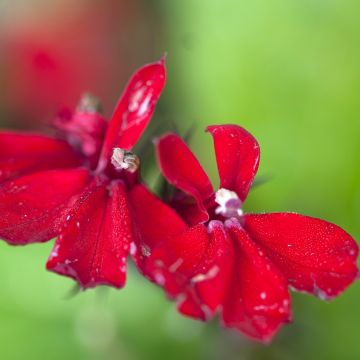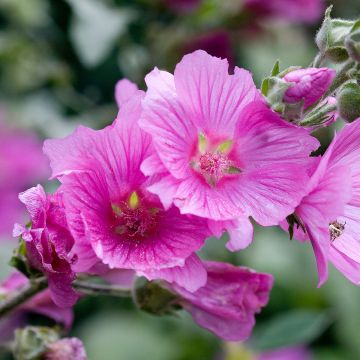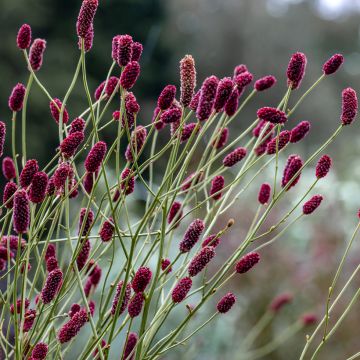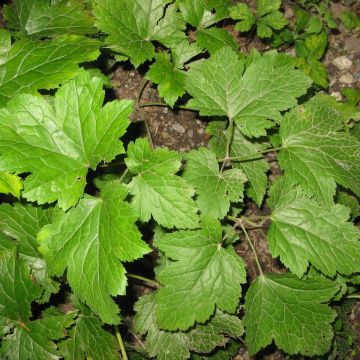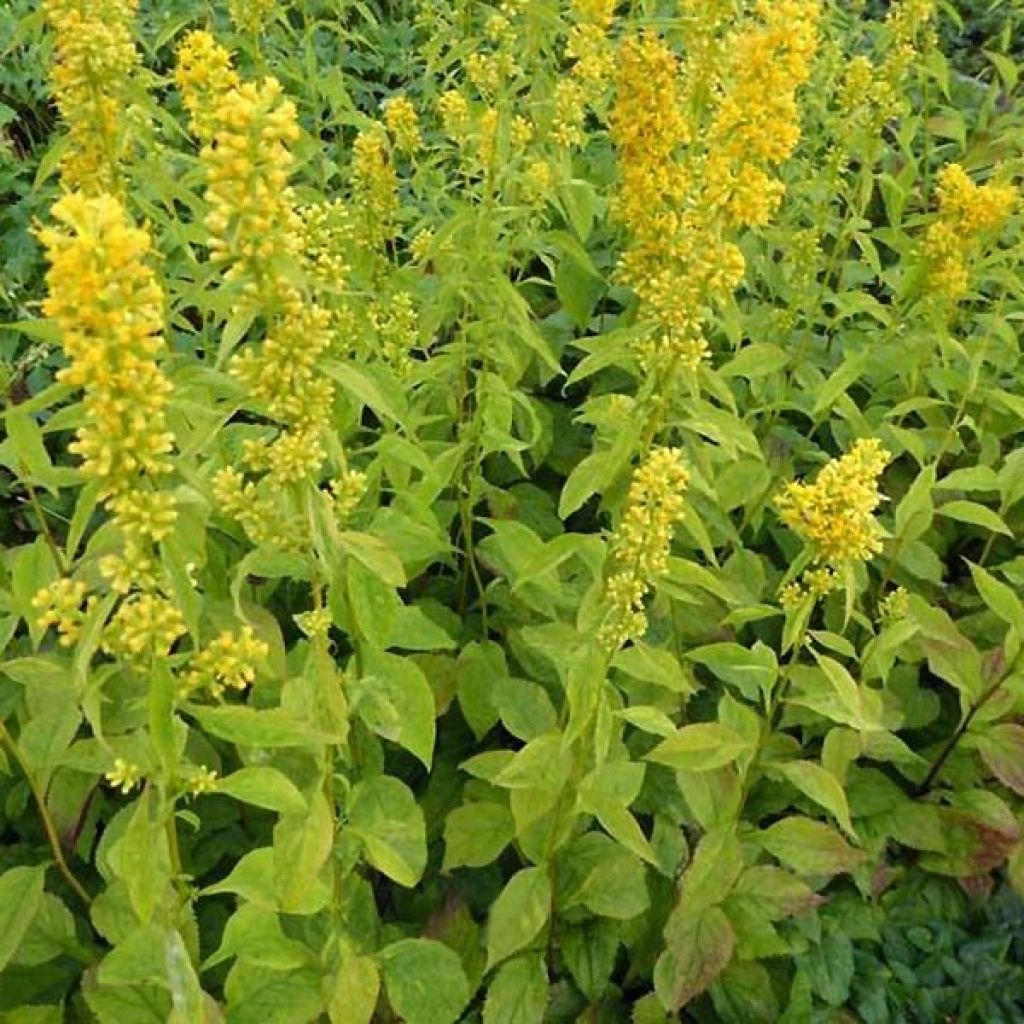

Solidago flexicaulis Variegata
Solidago flexicaulis Variegata
Solidago flexicaulis Variegata
Goldenrod, Broad-leaved Goldenrod, Elm-leaved Goldenrod
Why not try an alternative variety in stock?
View all →This plant carries a 12 months recovery warranty
More information
We guarantee the quality of our plants for a full growing cycle, and will replace at our expense any plant that fails to recover under normal climatic and planting conditions.
From €5.90 for pickup delivery and €6.90 for home delivery
Express home delivery from €8.90.
Delivery to Corse prohibited: UE law prohibits the import of this plant from mainland France to Corse as part of the fight against Xylella fastidiosa. Please accept our sincere apologies.
More information
Does this plant fit my garden?
Set up your Plantfit profile →
Description
Solidago flexicaulis 'Variegata', also known as Variegated Goldenrod, is a horticultural variety that stands out for its very beautiful, wide and toothed, pretty light green foliage with yellow spots. It offers a stunning contrast amidst dark foliage or intense blue, violet, orange, or red flowers. In August-September, short, sparse, yellow upright, insignificant panicles appear. A rather rare, different, hardy perennial that is easy to grow in full sun or partial shade, in any good garden soil to fill gaps in a border.
Solidago flexicaulis Variegata, also called variegated goldenrod, is a variety of woody perennial that belongs to the Asteraceae family, just like daisies and sunflowers. It comes from the species Solidago flexicaulis (syn. latifolia), called zigzag goldenrod, native to Quebec. It differs from the classic goldenrod with its ovate leaves and short clusters, far from the usual feathery forms. It reaches 30 to 100 cm (12 to 39in) high. The 'Variegata' variety is mainly appreciated for its decorative, deciduous foliage, which has a broad petiole extended by a wide, ovate and toothed, light green leaf with yellow spots. This variety does not spread through suckering. This plant will reach a height of 70 cm (28in) when flowering and will form a dense, flexible clump of leafy stems. Flowering takes place from August to September, with light, rather insignificant bright yellow inflorescences that blend well into wild gardens. The 5-6 mm (0in) head is composed of a few ligulate flowers, gathered in clusters in the axil of a leaf, towards the end of the stems. This goldenrod disappears in late autumn and reappears in spring, easily blending with other perennials.
This goldenrod is appreciated for the colour of its foliage and is perfect for filling spaces in the middle of a perennial border to highlight the different flower colours. It is a robust plant that only dislikes excessive heat and drought, which can cause powdery mildew. The delicate yellow flowers are welcome in autumn borders and in front of shrubs with vibrant colours (deciduous euonymus, Persian ironwood, smoke bush, oakleaf hydrangea...). Variegated Goldenrod can be planted in groups of three among blue (Aster laevis Calliope) or purple asters (Aster turbinellus), Buenos Aires verbena (Verbena bonariensis), Crambe cordifolia, or the lesser-known Kalimeris mongolica.
Report an error about the product description
Solidago flexicaulis Variegata in pictures
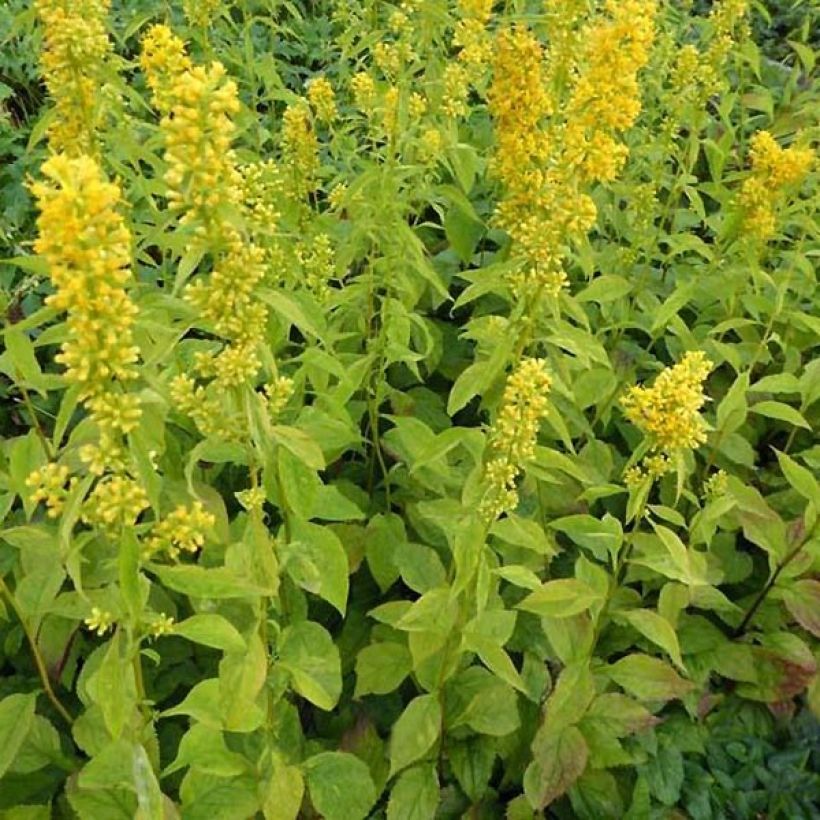

Flowering
Foliage
Plant habit
Botanical data
Solidago
flexicaulis
Variegata
Asteraceae
Goldenrod, Broad-leaved Goldenrod, Elm-leaved Goldenrod
Cultivar or hybrid
Other Perennials A to Z
Planting and care
Plant Solidago flexicaulis Variegata in full sun or partial shade, in any well-prepared neutral soil. It thrives best in moist and fertile, slightly acidic, neutral, or even limestone soil, although it can tolerate poor soils and withstand short periods of drought very well. Plant it sheltered from strong winds that could flatten the clumps. In hot regions, mulch the base in summer to maintain moisture. Avoid excessive heat and humidity, which can encourage powdery mildew.
Planting period
Intended location
Care
This item has not been reviewed yet - be the first to leave a review about it.
Summer flowering perennials
Haven't found what you were looking for?
Hardiness is the lowest winter temperature a plant can endure without suffering serious damage or even dying. However, hardiness is affected by location (a sheltered area, such as a patio), protection (winter cover) and soil type (hardiness is improved by well-drained soil).

Photo Sharing Terms & Conditions
In order to encourage gardeners to interact and share their experiences, Promesse de fleurs offers various media enabling content to be uploaded onto its Site - in particular via the ‘Photo sharing’ module.
The User agrees to refrain from:
- Posting any content that is illegal, prejudicial, insulting, racist, inciteful to hatred, revisionist, contrary to public decency, that infringes on privacy or on the privacy rights of third parties, in particular the publicity rights of persons and goods, intellectual property rights, or the right to privacy.
- Submitting content on behalf of a third party;
- Impersonate the identity of a third party and/or publish any personal information about a third party;
In general, the User undertakes to refrain from any unethical behaviour.
All Content (in particular text, comments, files, images, photos, videos, creative works, etc.), which may be subject to property or intellectual property rights, image or other private rights, shall remain the property of the User, subject to the limited rights granted by the terms of the licence granted by Promesse de fleurs as stated below. Users are at liberty to publish or not to publish such Content on the Site, notably via the ‘Photo Sharing’ facility, and accept that this Content shall be made public and freely accessible, notably on the Internet.
Users further acknowledge, undertake to have ,and guarantee that they hold all necessary rights and permissions to publish such material on the Site, in particular with regard to the legislation in force pertaining to any privacy, property, intellectual property, image, or contractual rights, or rights of any other nature. By publishing such Content on the Site, Users acknowledge accepting full liability as publishers of the Content within the meaning of the law, and grant Promesse de fleurs, free of charge, an inclusive, worldwide licence for the said Content for the entire duration of its publication, including all reproduction, representation, up/downloading, displaying, performing, transmission, and storage rights.
Users also grant permission for their name to be linked to the Content and accept that this link may not always be made available.
By engaging in posting material, Users consent to their Content becoming automatically accessible on the Internet, in particular on other sites and/or blogs and/or web pages of the Promesse de fleurs site, including in particular social pages and the Promesse de fleurs catalogue.
Users may secure the removal of entrusted content free of charge by issuing a simple request via our contact form.
The flowering period indicated on our website applies to countries and regions located in USDA zone 8 (France, the United Kingdom, Ireland, the Netherlands, etc.)
It will vary according to where you live:
- In zones 9 to 10 (Italy, Spain, Greece, etc.), flowering will occur about 2 to 4 weeks earlier.
- In zones 6 to 7 (Germany, Poland, Slovenia, and lower mountainous regions), flowering will be delayed by 2 to 3 weeks.
- In zone 5 (Central Europe, Scandinavia), blooming will be delayed by 3 to 5 weeks.
In temperate climates, pruning of spring-flowering shrubs (forsythia, spireas, etc.) should be done just after flowering.
Pruning of summer-flowering shrubs (Indian Lilac, Perovskia, etc.) can be done in winter or spring.
In cold regions as well as with frost-sensitive plants, avoid pruning too early when severe frosts may still occur.
The planting period indicated on our website applies to countries and regions located in USDA zone 8 (France, United Kingdom, Ireland, Netherlands).
It will vary according to where you live:
- In Mediterranean zones (Marseille, Madrid, Milan, etc.), autumn and winter are the best planting periods.
- In continental zones (Strasbourg, Munich, Vienna, etc.), delay planting by 2 to 3 weeks in spring and bring it forward by 2 to 4 weeks in autumn.
- In mountainous regions (the Alps, Pyrenees, Carpathians, etc.), it is best to plant in late spring (May-June) or late summer (August-September).
The harvesting period indicated on our website applies to countries and regions in USDA zone 8 (France, England, Ireland, the Netherlands).
In colder areas (Scandinavia, Poland, Austria...) fruit and vegetable harvests are likely to be delayed by 3-4 weeks.
In warmer areas (Italy, Spain, Greece, etc.), harvesting will probably take place earlier, depending on weather conditions.
The sowing periods indicated on our website apply to countries and regions within USDA Zone 8 (France, UK, Ireland, Netherlands).
In colder areas (Scandinavia, Poland, Austria...), delay any outdoor sowing by 3-4 weeks, or sow under glass.
In warmer climes (Italy, Spain, Greece, etc.), bring outdoor sowing forward by a few weeks.


































